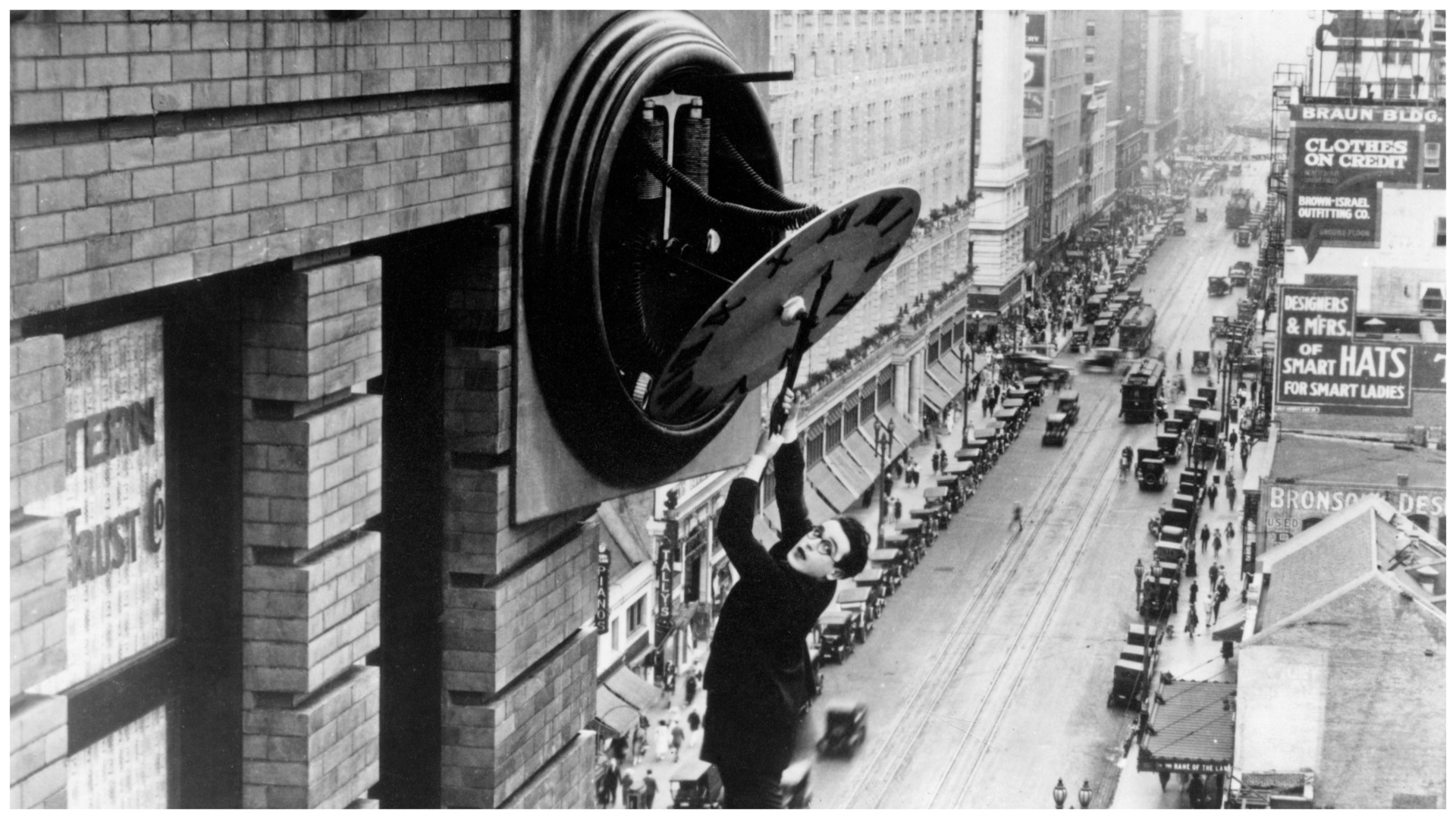
Think of silent cinema and chances are a number of images will come to mind. Count Orlok’s shadow on the stairs in Nosferatu (1922), perhaps, or the cityscapes of Fritz Lang’s Metropolis (1927). But sooner or later you’ll likely imagine a scene from one of the era’s many comedies.
Given that silent films rely on visual storytelling and the odd intertitle, it makes sense that comedy was so central to cinema’s creation. Clowns and mimes knew the power of a good sight gag, so it was only natural that such traditional forms of performance translated to the screen, with iconic results.
Take Safety Last! (1923), for example. Though more than 100 years old, it has lost none of its power to elicit guffaws and gasps in equal measure. Perhaps most famous for the finale – which sees Harold Lloyd scale a department store building and dangle from a giant clockface – the film has become a kind of shorthand for the madcap stunts and physical comedy that defined the genre.
Speaking of physicality, who can forget Buster Keaton? In an age of weightless CGI, the sight of him balancing on the front of a careering steam engine in The General (1926) still wows, as does the spectacular train wreck scene in the film’s climax.
And then there was Charlie Chaplin. When Sight and Sound released its 100 Greatest Films of All Time critics’ poll in 2022, the actor/director had, like Keaton, not one but two entries included. City Lights (1931) was made at a time when talkies were the norm, but Chaplin kept the film (mostly) silent, and it’s arguably better for it. And although Modern Times (1936) included some sound, it still used intertitles – by then retro – for the dialogue.
Sure, laughs can be found in clever wordplay or more modern affectations such as gross-out gags, awkward cringe-com and taboo-breaking shock. But with its endless invention, silent comedy will always reign supreme. Or is it just me?







